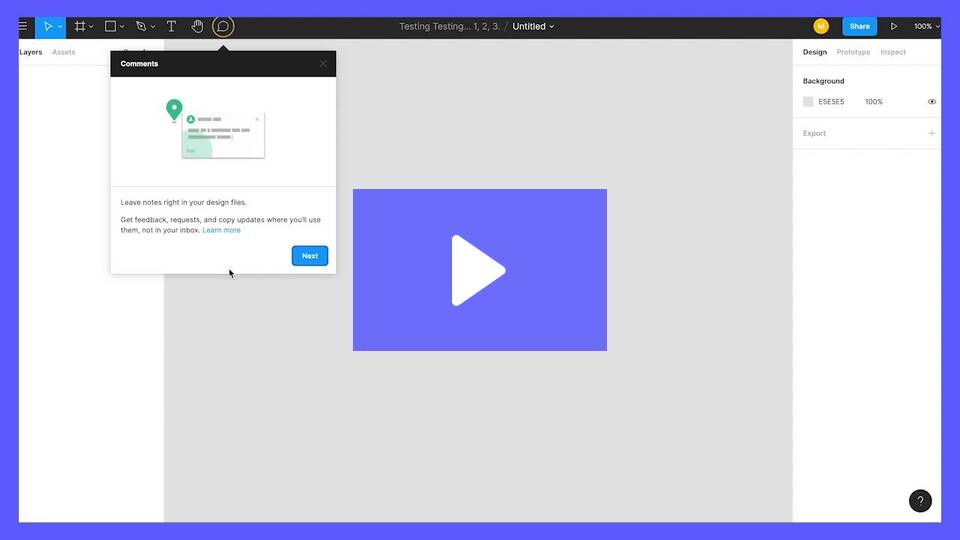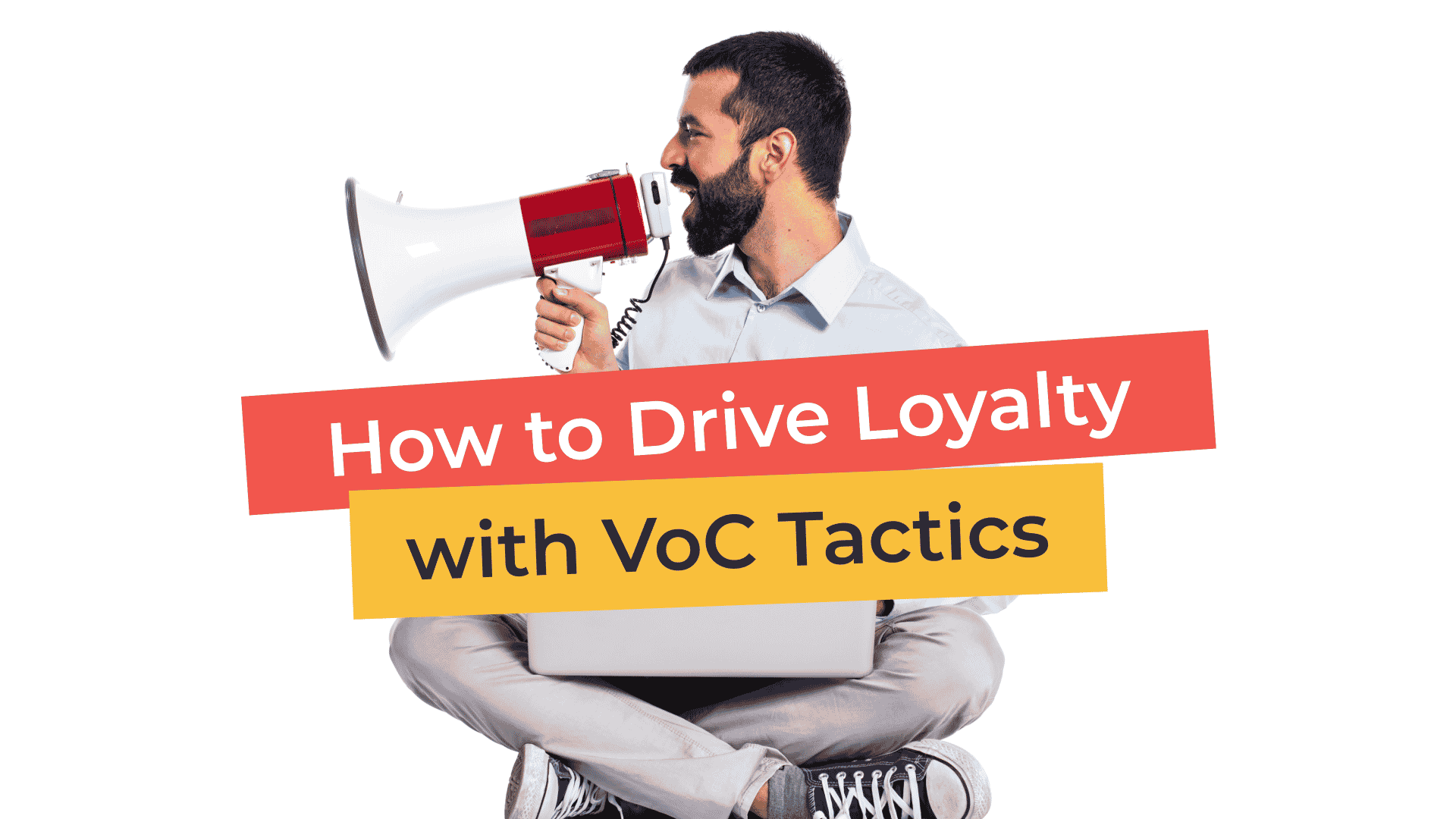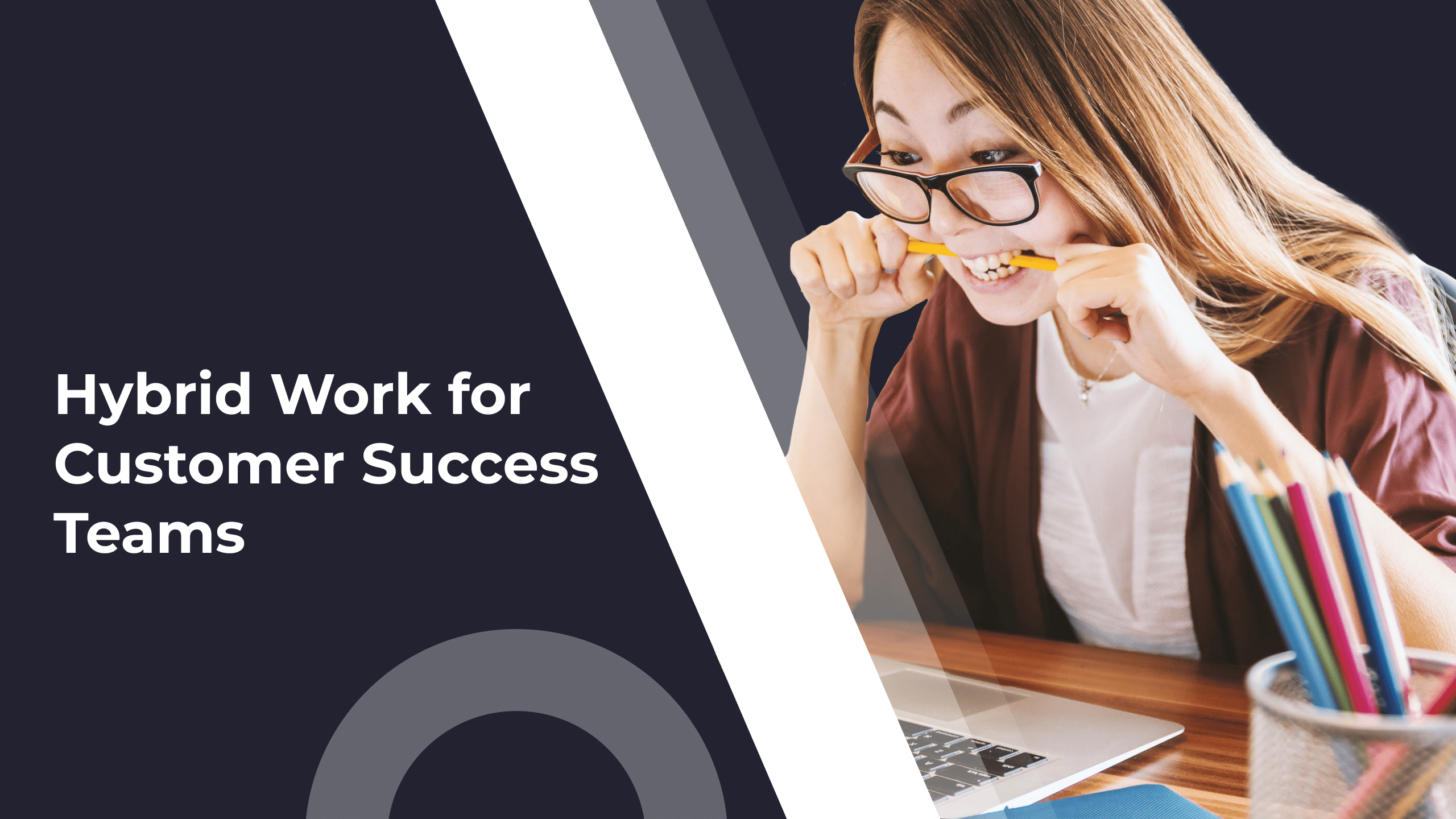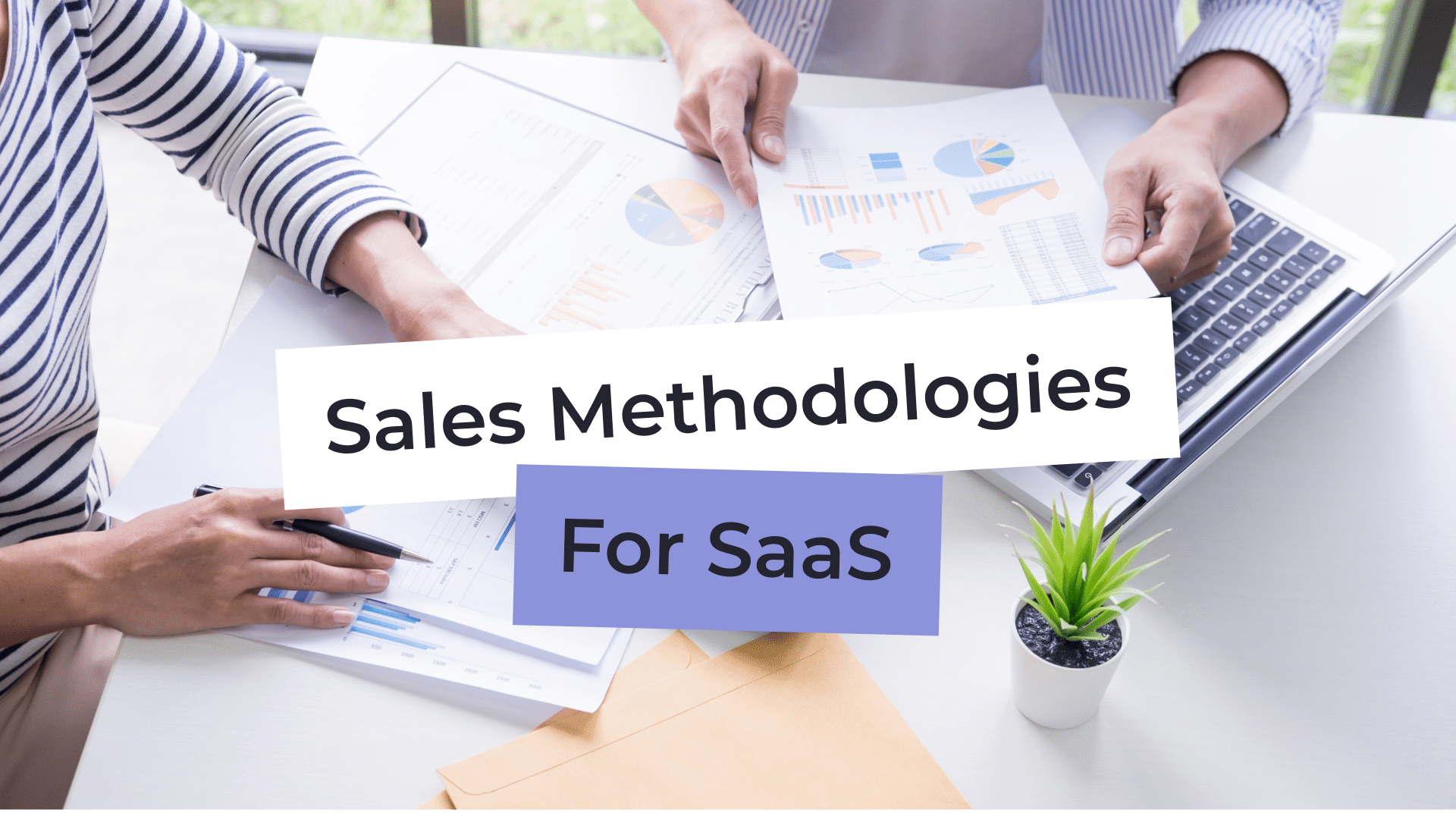Today, we’re going to look at how first-time user experience, of FTUE, can affect SaaS users’ engagement and goals, and the overall bottom line of your business.
A good FTUE might just take your product to the next level, but a poor one can be equally impactful.
For example, when Robinhood implemented their new “gamified” FTUE, it quickly led to widespread criticism and ended in a $7.5 million fine in the state of Massachusetts. In today’s piece, I’ll talk about what we can learn from such cases and about how you can tailor a better FTUE for your product. We’ll start with the definition:
What Is FTUE (First-Time User Experience)?
H2: What Is FTUE (First-Time User Experience)?
For the most part, first-time user experience is self-explanatory: what your users encounter when they first log into your product. Abbreviated as FTUE or FTUX, it also concerns users’ emotional response to their experience, and how that translates into user engagement and, of course, their willingness to spend money on your product.
FTUE reaches far into the depths of how users interact with your product. A useful tooltip they saw upon first logging in might set them on a path to onboarding success that would’ve been impossible otherwise.
Currently, 65% of onboarding managers cite onboarding success as leading to faster expansion or renewal. That is the essential benefit of FTUE optimization.
FTUE Components
First-time user experience includes but is not limited to:
- First Pre-Login Touch Points. Customer journeys begin before the point of sale or the first login. While not wholly part of FTUE, these touch points have a big impact on users’ desired outcomes and more concretely on what they actually do during their first few interactions with the product. Consider working with marketing to polish the messaging so it aligns with the FTUE.
- First Post-Login Touch Points. The most important component of even a bare-bones FTUE is what users see when they create an account and log in. Think Apple’s iconic “Hello” screen. At this point, it’s more about the vibe than the outcomes – you need to instill a sense of trust, it should be pleasant but not overwhelming.
- User Interface and Design. Next up, it’s all about the design of your app. Ask yourself – how does it look to someone who’s never seen it before, how logical is it to navigate, and can you make it better?
- User Engagement Tactics. Within the overall design of the product, users also need clear first steps to take. These boil down to engagement tactics – such as tooltips, templates, how-to guides, and even onboarding surveys that determine users’ goals, create memorable first impressions, and lead into custom product tours.
- Tailored Product Tours. Drawing users in and guiding them through the product is a key onboarding tactic. Product tours help familiarize users with the interface and, if you customize them based on user input, can directly lower time to first value and convince them this is the right product for them.
- Overall User Onboarding Experience. Fixing granular items in the onboarding experience can sometimes mean you miss the forest for the trees. CSMs and onboarding managers need to remember to take a holistic approach and make sure everything flows seamlessly.
- The A-ha Moment. The coveted holy grail at the end of any onboarding journey is the A-ha moment, i.e. the point of value realization. At this stage, customers realize the value they wanted and can see themselves continuing to use your product for the foreseeable future.
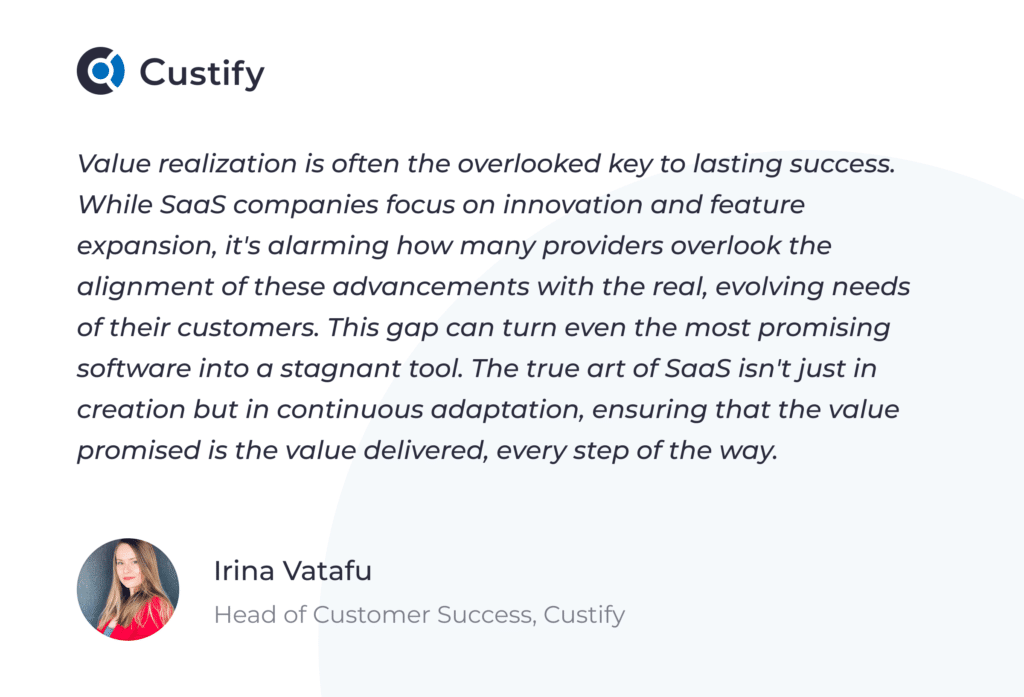
Why Is FTUE Important?
I’ve already alluded to many ways first-time user experience can positively impact a business, but let’s recap how FTUE does this.
An optimized FTUE:
- Creates a memorable initial interaction with your product, ideally triggering a positive emotional response in users, leading to higher adoption and long term engagement.
- Gathers essential info and establishes a baseline for each user, helping them clarify their goals, understand the next steps, and then reach those goals faster. This in turn leads to greater customer loyalty and incentive to spend more.
- Acts as a signpost for new users, showing them your product and instilling a sense of familiarity, comfort, and clarity. How many times have you tried a product and felt lost? That’s what FTUE sets out to eliminate, allowing for greater user retention and goal attainment.
- Increases how quickly users reach the expansion stage and how much they’re willing to spend. Add-ons, subscriptions, one-time-purchases all should show clear advantages during the FTUE. If you nail the UX design and don’t lock the expected value behind an extra paywall, customers will have an incentive to spend more on add-ons, feature additions, and other forms of added value, even cosmetic upgrades.
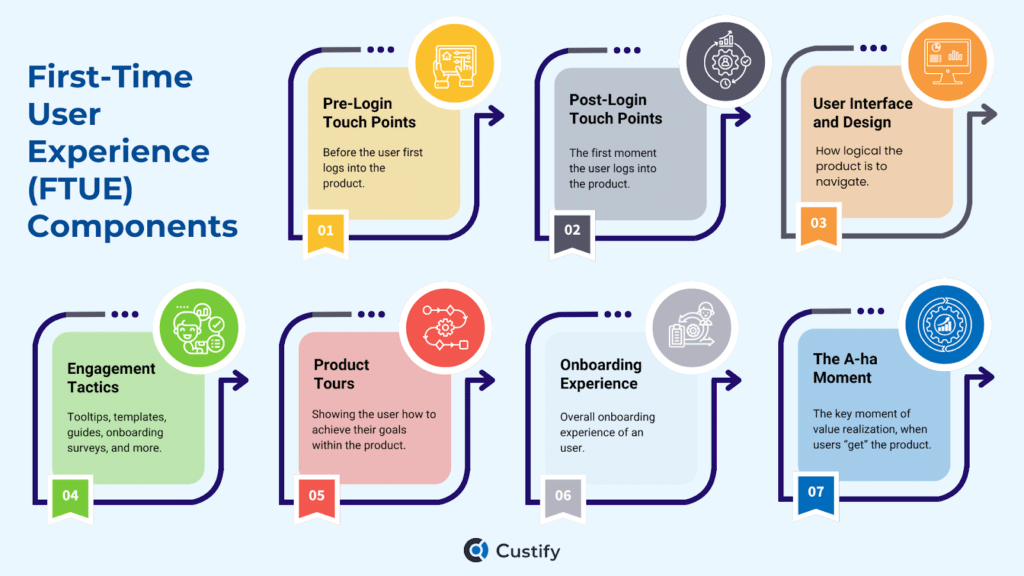
[New Graphic]
H2: How to Design a Good FTUE?
How to Design a Good FTUE?
Let’s explore a few pointers to make your FTUE as good as can be.
Bear in mind, however, that oftentimes when you see a good one, and here I’ll come back to the Apple example – it’s very easy to be drawn in by their FTUX elements and immediately feel a sense of calm and purpose. Like you’re ready to explore what the new device or software has to offer.
This should be your goal moving forward.
1. Gather All the Necessary Data
Data is the bread and butter of user experience. Nearly 50% of onboarding professionals cite misaligned customer expectations as a key bottleneck of their onboarding process (The State of Customer Onboarding 2025). Therefore, your first concern should be to understand customers better.
Do that by setting up the systems for data collection – aka your CRM, customer success platform, and any other in-house methods of obtaining relevant metrics from your product.
Next, determine which metrics indicate user success, set some benchmarks, and ensure your tech stack can easily gather and monitor these KPIs.
With your setup complete, you should be able to create user segments, automate onboarding elements, and personalize onboarding flows.

Example: Loom uses surveys to gather important datapoints from its users. Source: Loom Onboarding Case Study.
2. Draft Segmented Customer Journey Maps
To effectively deliver personalized experiences to users, start by drafting customer journey maps for each of the segments you identified. Your goals are this stage are to:
- See whether you have more than one type of user.
- Determine how each segment of users behave and what their goals are.
- Pinpoint the A-ha moment for each segment.
- Determine the factors that influence success for each user segment.
- Find the segment with the highest spend potential.
Different users will want different outcomes when using your product. While you should optimize your FTUE for all segments, remember to also consider the ROI and your overall business goals. Maybe some users are more likely to purchase add-ons, so single them out for future upsell initiatives.
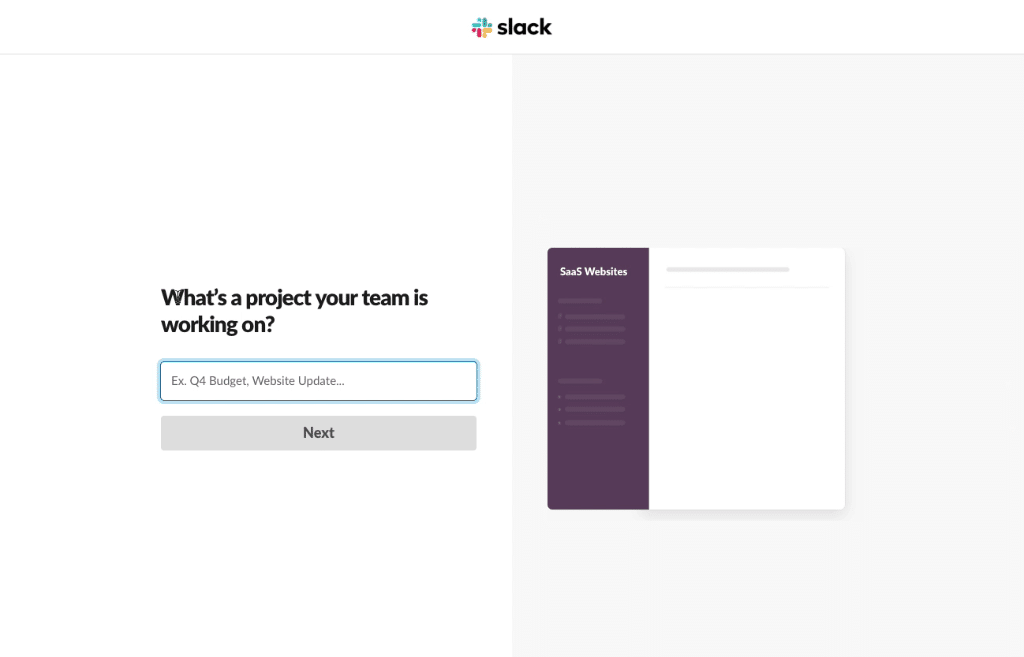
Example: Slack has entirely distinct onboarding flows for Admins, using the survey approach to determine their goals and help them set up the workspace. Source: Slack.
3. Plan and Design Your Desired FTUE Flow
Upon first opening your software product, the design should make three to four elements perfectly clear:
- Location. Where they are in the app: the homepage, a welcome screen, a survey.
- Action. What they need to do: click on a tutorial tooltip, a “Continue” button, or simply go directly to their desired menu.
- Direction.Where they can go: users must clearly see a path to the next steps in their product journey.
- Goal. Where they will end up: users must imagine themselves at the end of the journey and understand how to solve their problems and get there, even if it will take a lot of time and effort to do so. This one doesn’t need to be immediately clear, but should be clear soon after logging in.
Based on these principles, work with your Product team to create a FTUE that delivers them for all your user segments.
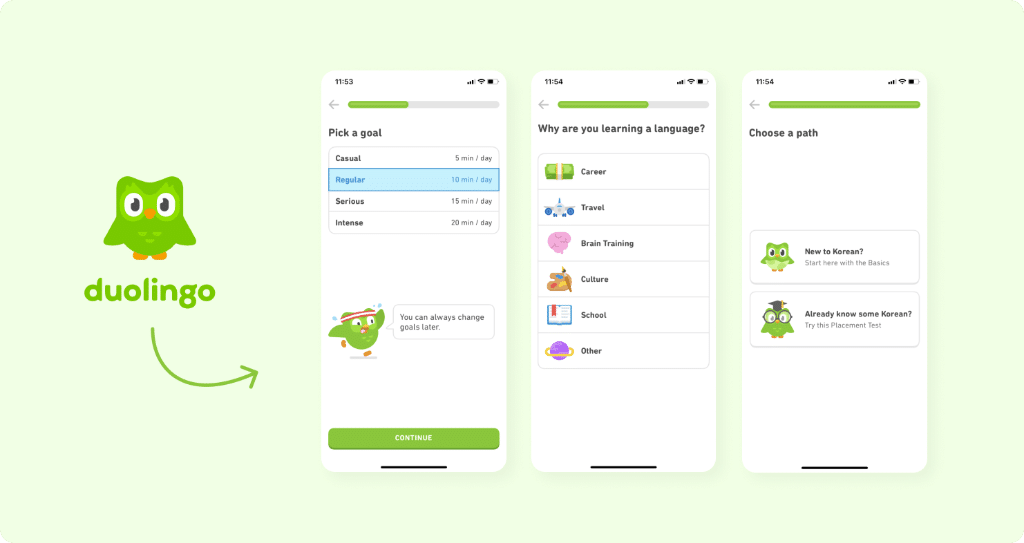
4. Craft a Purpose-built Product Tour
Different products require a different strategy and approach to FTUE. What worked for Duolingo above won’t work for other tools – as we can see in the Grammarly example below.
A great FTUE adapts to your user base, and ideally to each segment or even each individual user in that group. This is why point number one on this list is so crucial – you need the data to be able to determine whether your users want a detailed, survey-style onboarding, or a simple, “jump-right-in” product tour that shows them how to use the product.
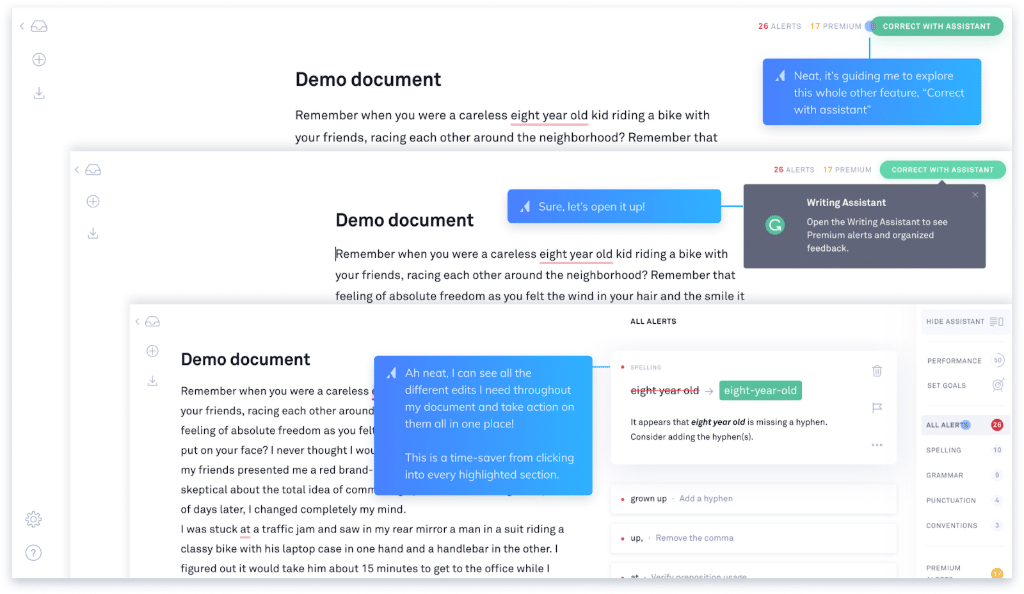
5. Continuously Monitor, Get Feedback, and Optimize
Not every product launches with a perfect first time user experience. In fact, in most cases, it’s a work-in-progress throughout your development lifecycle. The journey to build a great product will always imply a complex balance of priorities.
Choosing what you focus on during each stage of development is difficult, and it will always be influenced by your budget, your data, your resources, and your overarching approach.
FTUE might not be your first priority, but continuously monitoring it, getting feedback, and optimizing it has the potential to save you a lot of MRR and frustrating customer conversations down the line.
Example: Figma has improved their onboarding process significantly since it first launched. Showcased in the video is what can happen when you really put some thought into keeping your FTUE fresh and up-to-date. Source: Figma’s animated onboarding flow
FTUE Mistakes and How to Avoid Them
Around the industry, examples abound of poor FTUE leading to unwelcome, sometimes disastrous outcomes. I mentioned one example at the start of the article – when the Robinhood app implemented its gamified FTUE, it unearthed fundamental flaws in the app like using FOMO and other engagement tactics to drive users to make fiscally irresponsible decisions. Their FTUE design failed because they fundamentally misunderstood their own user base.
Other examples include Airbnb Plus’ onboarding experience, which drew in a torrent of complaints from their most profitable users – superhosts. And of course, we can’t forget the time Microsoft did not optimize its FTUE to accompany the major design changes in Windows 8, leading to titles such as TechRadar’s Windows 8 is dead and we’re dancing on its grave.
1. Not Understanding Your User Base
If you don’t have all the data on your user base, you’ll end up acting upon flawed presuppositions, making your image of your user base different than what it actually is. Let’s look at some ways this could work against you:
- You treat your users like novices. A classic approach to SaaS FTUE is trying to explain everything as soon as users log in. Research can show your users are already fairly knowledgeable, so overexplaining the simplest of concepts can look patronizing and feel like you’re insulting their intelligence.
- You treat your users like experts. At the other end of the spectrum, your product might be highly technical, so you’d assume your users are tech savvy and don’t need handholding. However, customer data can show you segments of your user base that need more guidance and a personalized FTUE.
- You don’t take users’ needs seriously. Not knowing your users well enough can lead to a disconnect where you implement tactics that would work better in other sectors, i.e. using gamification and engagement-based tactics for a financial investment app.
2. Ignoring Existing Users’ Experience
When working to improve onboarding for new users, it might be easy to forget about your existing user base.
Your goal should be to integrate the two experiences seamlessly. Existing users should not feel bogged down by pointless login steps, while new users should understand the product and join the ranks of successful, retained users as quickly as possible.
3. Segregating Your User Base
The next FTUE mistake follows naturally from the previous one. When you optimize for different segments and even for old vs new users, you might be unwittingly separating them. For products where one advantage is in the diverse set of users you’re bringing together, this mistake can instantly eliminate one of your best selling points.
Instead, aim to create a sense of community through your first-time user experience: encourage collaboration and communication, help users feel connected, and instill an emotional attachment to the product.
4. Neglecting FTUE Optimization and Updates
Ignoring first-time user experience may be your last mistake. Similarly, not updating your FTUE can also be detrimental.
I’ve showcased many of the reasons why FTUE matters already, but suffice it to say your users will thank you, understand your product better, and realize the value they are getting and how that could grow. This will lead to a higher retention rate, more referrals, and increased MRR.
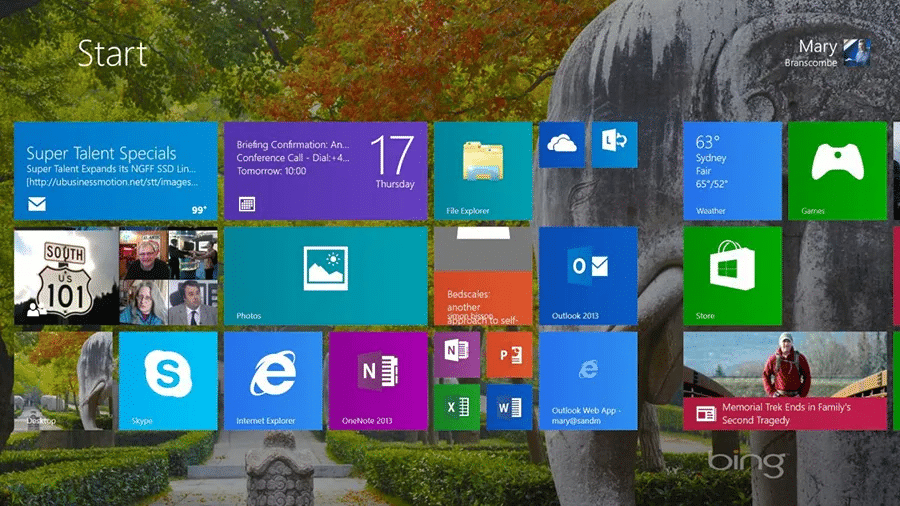
5. Treating FTUE as an Opportunity for Upsells
A common mistake when it comes to FTUE is overselling premium features to users who’ve only just logged in. Such a practice feels like you care more about upsells and revenue than about making sure your users have a good experience in your product.
You can mention higher plans, add-ons, and other expansion avenues, but never forget your initial focus should be to prove to users your product is worth it, that they’re getting value from it, and that there’s a clear path to greater success.
What Comes After FTUE?
One thing many forget is that FTUE must lead seamlessly into the actual product experience.
Users have to pass from onboarding to adoption quickly, easily, yet always have the option to get help or even review product tour documentation, tooltips, or entire steps.
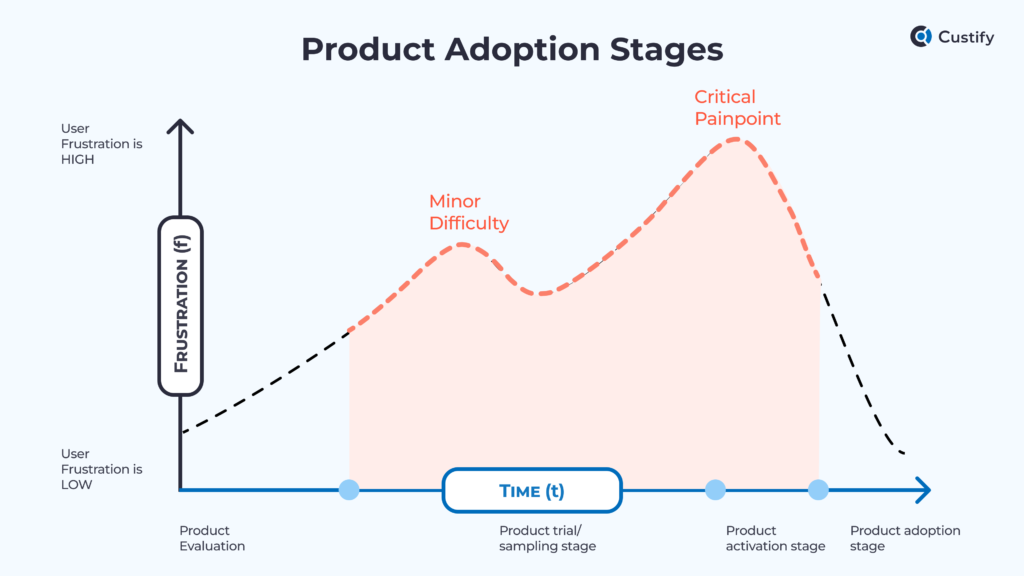
This is also the point when CSMs step more into their role as true value drivers for your customers. Using the power of a customer success platform like Custify, they can:
- Automate post-FTUE communication. When all the systems for data collection are in place and integrated into your CSP, you can use highly specific triggers to send out automated customer communications. This allows you to focus on other, more important, revenue-driving initiatives.
- Assign first time users to the correct segment. You can also use that initial onboarding survey to assign users to a specific segment, allowing for better personalization and targeted campaigns down the line, not just during the FTUE.
- Bring in users into established feedback loops. Custify allows you to set up automated feedback loops that take user feedback from the forms in your product or on your website, prioritize it and pass it onto CS, then to all relevant stakeholders, before monitoring implementation and closing the loop by thanking the customer for their input. First time users should be added to these loops as quickly into their lifecycle as possible.
- Monitor user activity in real time. With a dedicated customer success dashboard per account, you can capture essential data within Custify and see it at a glance, allowing you to monitor adoption rates, user engagement, and how likely your users are to spend more with you.
- Drive engagement and full adoption. All of these elements tie together and allow you to implement more advanced and continuous user engagement tactics that lead to full product adoption.
User engagement is not a one-and-done tactic. Imagine a world where every SaaS product follows up on FTUE with genuine engagement, CSM conversations that lead to better solutions, and continuous product improvement. I think it’s a noble goal that we in customer success can make true by working together. To that end, check out more strategies to drive product adoption beyond FTUE.
Summing Up
Have ideas for improving your FTUE and not sure where to start? I’d say start by collecting data on what your users want and go from there. Our CSP is ready to help you centralize customer datasets into an intuitive user dashboard, and our CSMs are ready to offer an unmatched FTUE that can inspire you to create your own.
Not sure where to start? Opt for our concierge onboarding and we’ll make sure you’ve got the tools you need to excel.
